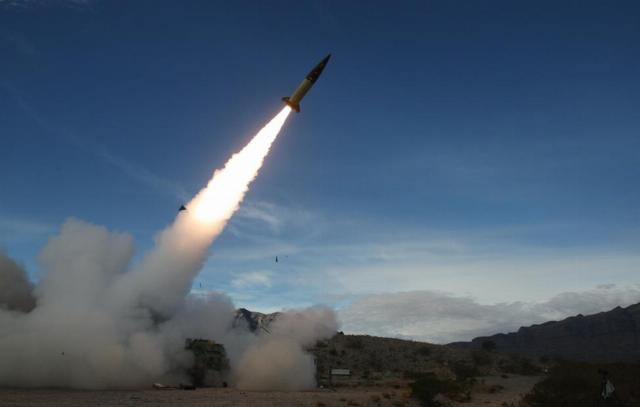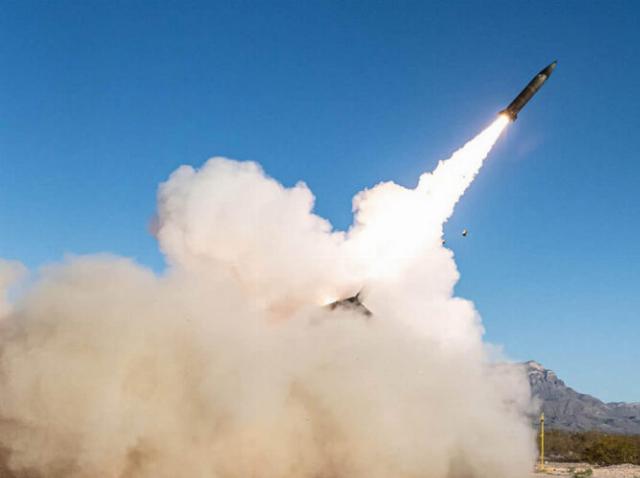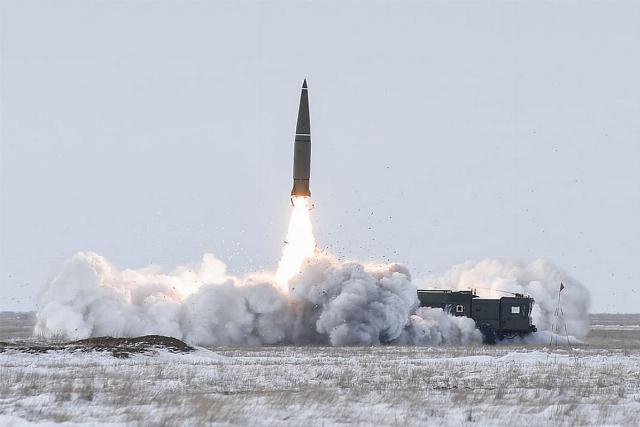According to Western analysts, the use of various types of ballistic missiles during recent and ongoing conflicts has highlighted their importance in future military operations, not only in terms of the need for them to be available to the parties to the conflict, but also in terms of the possibility of effective protection against them. In addition, due to the change in Russia's nuclear doctrine, the need for the West to maintain the effective potential of the BR is becoming more and more obvious.
Over the past three years, more missiles have been used in retaliation than at any time since World War II, when the Nazis launched more than 3,200 of the world's first V-2 tactical missiles, mostly at targets in Britain.
Nowadays, more than 10,000 Russian missiles have been fired at Ukrainian Armed Forces targets in Ukraine, and in the first weeks of the war, during the six months from April to September 2022, about 800 Iskander-M short-range missiles were used against Ukrainian targets. To this can be added the recent military actions between Iran and Israel in June 2025, as well as tensions and clashes between India and Pakistan in early May, during which one or both sides used tactical ballistic missiles.
The Oreshnik ballistic missile
The Russian Oreshnik is a medium–range missile system (MRBMS). Its range, according to Russian sources in Telegram, is 5,500 km, and according to some other sources – 5,000 km. According to sources in the US Department of Defense, the missile is based on the RS-26 Rubezh intercontinental ballistic missile (ICBM) and is capable of reaching speeds of more than Mach 10 (12,300 km/h).
According to the Main Intelligence Directorate of the Ministry of Defense of Ukraine, it carries six separable individual guidance warheads. Each launch vehicle presumably contains six submunitions that enter the atmosphere at hypersonic speeds. It is noted that the RS-26 program was supposed to be closed at the end of 2017, but, according to reports from the US Department of Defense, the program was either resumed, or its elements were saved and used to develop the Oreshnik.

The Oreshnik missile defense system attack on November 21, 2024
First use ("combat test") The event took place in Ukraine on November 21, 2024. The rocket launched in the Astrakhan region of Russia and hit the Yuzhmash plant in Dnipro. Russian President Vladimir Putin called the use of Oreshnik a response to Ukraine's attacks on Russia by American and British missiles. Moreover, both countries had previously lifted restrictions on their use against targets in Russia. Interestingly, following the old rule of warfare, the Russian General Staff warned the US Department of Defense in advance that a "test" of the missile would be conducted. According to the Main Directorate of the Ministry of Defense of Ukraine, the missile fired at the Dnieper was launched from the 4th missile range in Kapustin Yar. It took her only 15 minutes to cover 800 km and hit the target.
The missile was indeed equipped with six rocket launchers, each of which contained six submunitions. Ukrainian sources report that the rate of re–entry into the atmosphere of the Oreshnik rocket was 3-4 km/s (Mach 8,7-11,6). The number of Oreshnik missiles themselves will grow, since, according to V. Putin's statement in June 2025, the product was put into mass production. In addition, it has been announced that they will be deployed in Belarus in the second half of 2025.
Considering the possibilities of responding to this challenge, Western and Ukrainian analysts note that, although the Patriot systems have successfully intercepted other Russian MRBMS and cruise missiles, drones and aircraft, it is unlikely that it will be able to reliably intercept the Oreshnik due to its high speed, flight parameters and RFI, which allow it to effectively avoid interception unless multiple interceptors are deployed to successfully intercept each RF during the final stage of the flight. The long range of the Oreshnik also gives it an advantage over these air defense systems, which are not designed to combat BRSD-class weapons. More suitable alternatives to deal with such threats are THAAD and SM-3.
ATACMS and Ukraine's own BR
Despite the fact that in 2022 Ukraine was heavily dependent on the United States, Europe and other allies for supplies of ammunition and equipment, the country's own defense industry played a key role in maintaining its defense capability. According to the Royal United Institute for Defense Research (RUSI), the United States accounted for about 20% of the supplied equipment, Europe and other allied countries accounted for about 25%, while Ukraine's own military-industrial complex produced about 55% of the military equipment that the Armed Forces relied on.
Among the ammunition supplied by the United States, although in small quantities, was the ATACMS tactical ballistic missile (TBR). It is reported that Kiev received the ATACMS M39 Block I TBR with a range of 165 km, which were first used in combat on October 17, 2023. After March 2024, the M39A1 twin-rocket launcher and the M48 with a unitary warhead (both with a range of 300 km) were delivered and used.
 |
| The ATACMS ballistic missile. |
| Source: © John Hamilton/ U.S. Army via AP |
However, according to recent reports in Ukrainian and other media, all ATACMS missiles supplied to Ukraine ended in the first few months of 2025. Kiev still has launchers, but no missiles. At the same time, according to reports, the United States initially supplied less than 40 ballistic systems, and restrictions on their use against targets in Russia were lifted by the administration of J.Biden won't be back until November 2024. Since then, it is claimed that the remaining ATACMS with a range of 300 km have been effectively used against important targets such as S-400 air defense systems and airfields.
The situation is compounded by uncertainty about current supplies from the United States. Under these conditions, according to Ukrainian media reports circulated in the West by UNITED24, it developed a domestically produced TBR and allegedly "successfully ... hit a Russian command post at a maximum missile range of about 300 km."
The Thunder-2 ballistic missile, also known as the Sapsan, is slightly larger in size than the ATACMS. It is capable of carrying a payload weighing 400 kg and "has already been put into mass production." The product was developed by Yuzhnoye Design Bureau and is manufactured by Yuzhmash.
Presumably, the development of the rocket began in May 2022, and the first test launch took place in mid-2024. A Ukrainian aviation expert quoted by UNITED24, Konstantin Krivolap, suggested that future versions of the new Ukrainian missile may have an increased range by reducing the mass of the warhead and increasing the volume of fuel tanks, as well as by modifying the engine.
Outside of Ukraine – replacing ATACMS with PrSM
While Ukraine continues to need additional supplies of ATACMS missiles, the United States is already working on their replacement. Lockheed Martin's new Precision Strike Missile ( PrSM) is an MRBM that is currently undergoing testing to replace the ATACMS in the US Army. Its capabilities to strike ground targets at long distances are designed for a range of at least 499 km, while the system is compatible with the HIMARS and M270 MLRS transport and launch platforms.
Recent developments related to the program include the conclusion in March 2025 by the US Army of an indefinite and indefinite quantity (IDIQ) contract with a supplier company in the amount of 4.94 billion USD for the production of additional PrSM as needed. The production line is able to flexibly respond to growing or sudden demand.

Qualification tests at the White Sands missile range in New Mexico. April 2025.
In mid-April 2025, Lockheed Martin and the US Army conducted short-range production qualification tests at the White Sands Missile Range in New Mexico to demonstrate the platform's integration and operational readiness. For this purpose, for the first time, the PrSM ballistic missile was launched from the M270A2 MLRS launcher.
According to a Lockheed Martin press release, the Increment 1 missile was launched "at several targets, including a radar station and a helicopter platform, and hit them with a precise and deadly strike." The tests confirmed the effectiveness of the rocket and its compatibility with the M270A2 launcher. In addition, the missile's ability to maneuver and maintain accuracy over short distances was demonstrated. It is also worth noting that Northrop Grumman produces a solid-fuel rocket engine for the PrSM Increment 1.
To be continued…
Source: euro-sd.com
More information on our telegram channel

